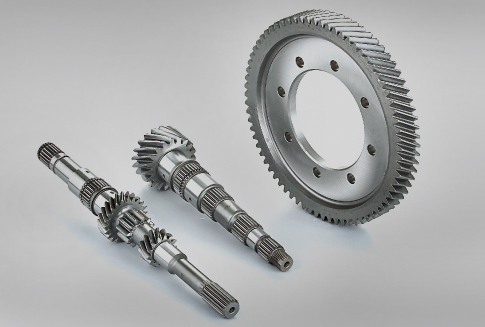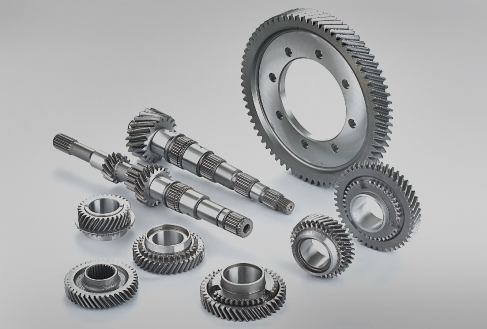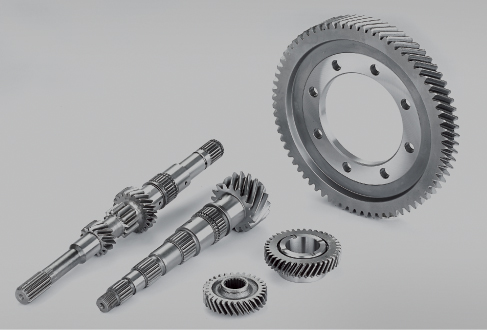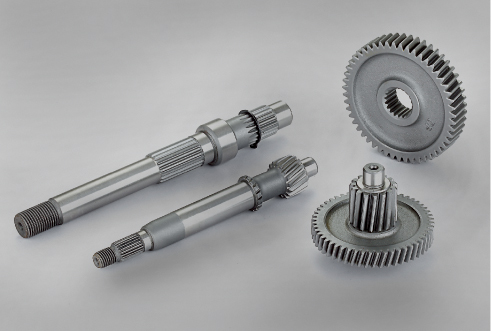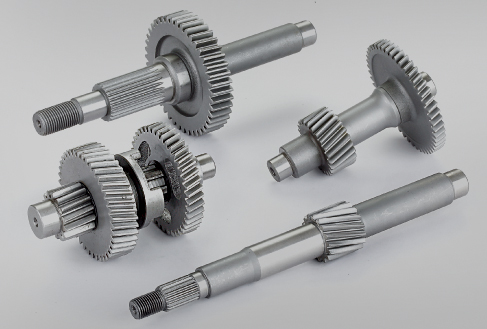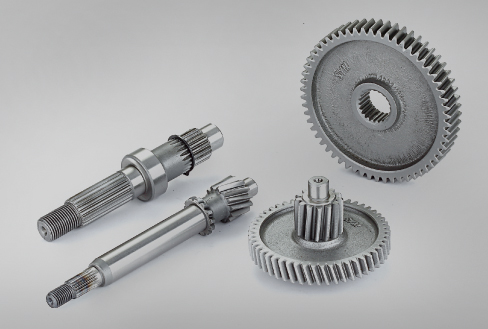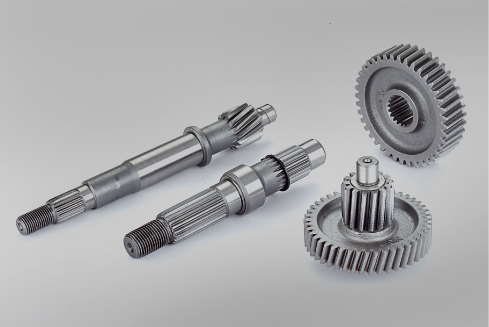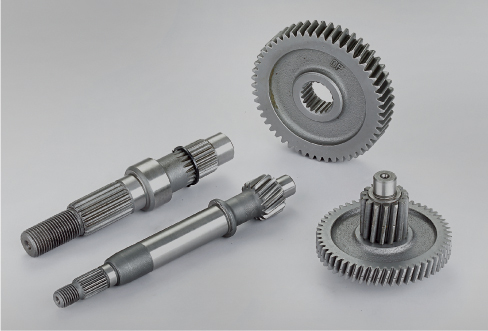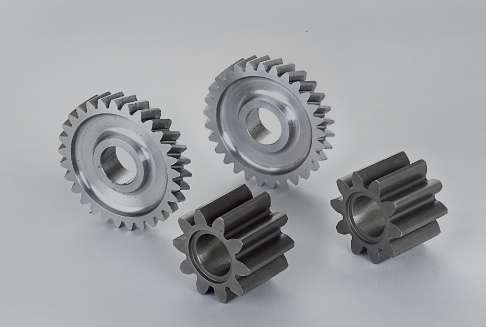Professional manufacturer of automobile transmission gears, mechanical engineering gears, engine gears, light and heavy trucks, and truck transmission gears.
Evolution of Automotive Transmission: Shifting Gears in Driving Technology
Update time:2024/01/03
The evolution of automotive transmission stands as a testament to the ceaseless progress in automotive engineering, reflecting the continuous pursuit of efficiency, performance, and driver comfort. Since the advent of automobiles, the transmission system has undergone remarkable transformations, enhancing the driving experience while adapting to changing technological landscapes.
At its core, the transmission serves the fundamental purpose of transferring power from the engine to the wheels, allowing the vehicle to move at varying speeds. several types of transmissions have emerged, each with its unique mechanisms and benefits.
Early vehicles featured manual transmissions, requiring drivers to manually engage gears using a clutch pedal and gear stick. These transmissions offered complete control but demanded skillful coordination from the driver. As automotive technology advanced, automatic transmissions entered the scene, enabling gear changes without manual intervention. This innovation marked a significant shift, offering smoother rides and accessibility for a wider range of drivers.
Continual advancements led to the development of continuously variable transmissions (CVTs). Unlike traditional transmissions with fixed gear ratios, CVTs provide seamless acceleration by adjusting to the optimal gear ratio for any driving situation. The absence of distinct gear shifts results in smoother power delivery and improved fuel efficiency, making them a popular choice in modern vehicles.
the rise of dual-clutch transmissions (DCTs) introduced a blend of manual and automatic features. DCTs utilize two separate clutches for odd and even gears, enabling lightning-fast gear changes while maintaining efficiency. This technology found its place in high-performance cars, elevating driving experiences with rapid, precise gear shifts.
The automotive industry has also witnessed a surge in electric and hybrid vehicles, prompting the emergence of single-speed transmissions. Electric vehicles (EVs) utilize a single-speed gearbox due to the electric motor's broad torque range, simplifying the transmission system and enhancing overall efficiency. Hybrid vehicles incorporate various transmission types, combining internal combustion engines with electric motors, optimizing power delivery through sophisticated transmission systems.
The future of automotive transmission continues to evolve with the integration of advanced technologies. Developments in electric and autonomous vehicles are driving innovation, leading to novel transmission designs tailored to the specific needs of these cutting-edge automobiles. With a focus on maximizing efficiency, reducing emissions, and enhancing performance, engineers are exploring novel transmission concepts to redefine the driving experience.
the quest for sustainability has pushed the boundaries of transmission technology. Research into eco-friendly materials, advanced lubricants, and energy recovery systems aims to create transmissions that minimize environmental impact while maintaining reliability and performance.
the evolution of automotive transmission has been characterized by a journey of innovation, catering to diverse driving preferences and technological advancements. From manual gearboxes to sophisticated CVTs, DCTs, and the transmission systems of electric and hybrid vehicles, each iteration represents a milestone in automotive engineering. As the automotive industry continues to evolve, the transmission will remain a pivotal element, adapting to meet the demands of modern driving while pushing the boundaries of efficiency and performance.
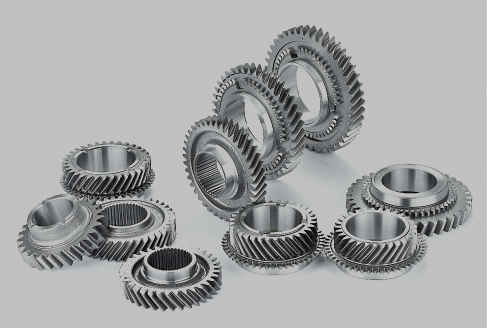
At its core, the transmission serves the fundamental purpose of transferring power from the engine to the wheels, allowing the vehicle to move at varying speeds. several types of transmissions have emerged, each with its unique mechanisms and benefits.
Early vehicles featured manual transmissions, requiring drivers to manually engage gears using a clutch pedal and gear stick. These transmissions offered complete control but demanded skillful coordination from the driver. As automotive technology advanced, automatic transmissions entered the scene, enabling gear changes without manual intervention. This innovation marked a significant shift, offering smoother rides and accessibility for a wider range of drivers.
Continual advancements led to the development of continuously variable transmissions (CVTs). Unlike traditional transmissions with fixed gear ratios, CVTs provide seamless acceleration by adjusting to the optimal gear ratio for any driving situation. The absence of distinct gear shifts results in smoother power delivery and improved fuel efficiency, making them a popular choice in modern vehicles.
the rise of dual-clutch transmissions (DCTs) introduced a blend of manual and automatic features. DCTs utilize two separate clutches for odd and even gears, enabling lightning-fast gear changes while maintaining efficiency. This technology found its place in high-performance cars, elevating driving experiences with rapid, precise gear shifts.
The automotive industry has also witnessed a surge in electric and hybrid vehicles, prompting the emergence of single-speed transmissions. Electric vehicles (EVs) utilize a single-speed gearbox due to the electric motor's broad torque range, simplifying the transmission system and enhancing overall efficiency. Hybrid vehicles incorporate various transmission types, combining internal combustion engines with electric motors, optimizing power delivery through sophisticated transmission systems.
The future of automotive transmission continues to evolve with the integration of advanced technologies. Developments in electric and autonomous vehicles are driving innovation, leading to novel transmission designs tailored to the specific needs of these cutting-edge automobiles. With a focus on maximizing efficiency, reducing emissions, and enhancing performance, engineers are exploring novel transmission concepts to redefine the driving experience.
the quest for sustainability has pushed the boundaries of transmission technology. Research into eco-friendly materials, advanced lubricants, and energy recovery systems aims to create transmissions that minimize environmental impact while maintaining reliability and performance.
the evolution of automotive transmission has been characterized by a journey of innovation, catering to diverse driving preferences and technological advancements. From manual gearboxes to sophisticated CVTs, DCTs, and the transmission systems of electric and hybrid vehicles, each iteration represents a milestone in automotive engineering. As the automotive industry continues to evolve, the transmission will remain a pivotal element, adapting to meet the demands of modern driving while pushing the boundaries of efficiency and performance.


 简体中文
简体中文 English
English España
España Русский язык
Русский язык
